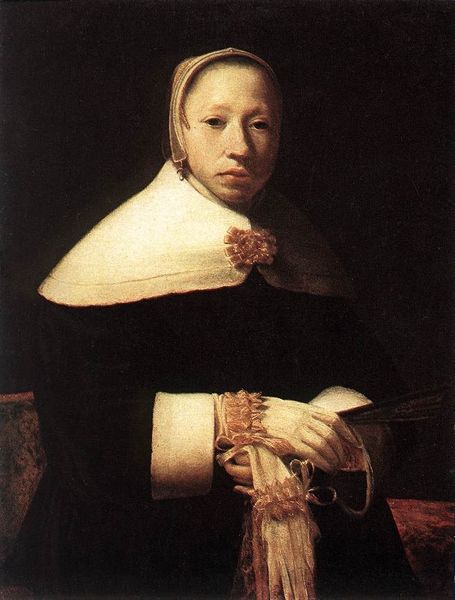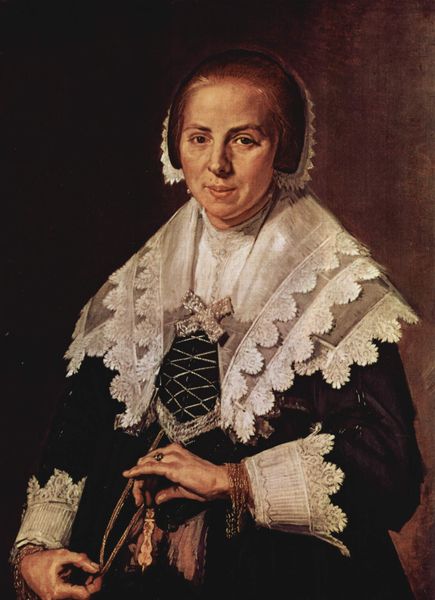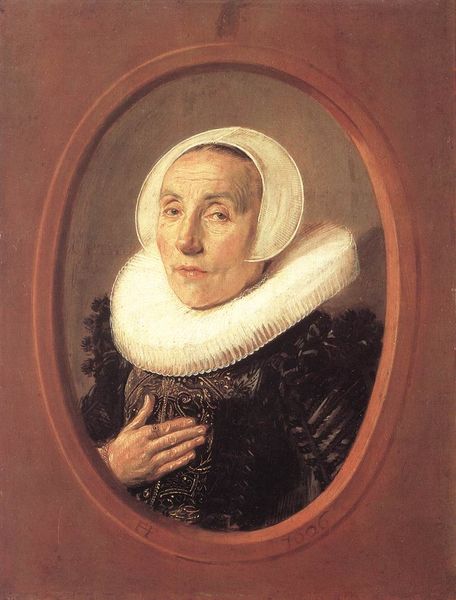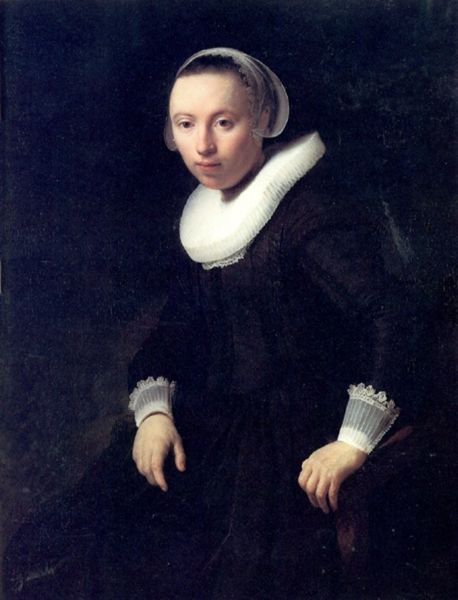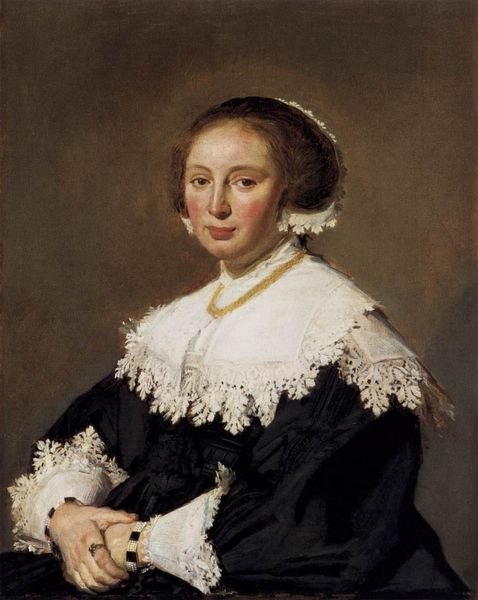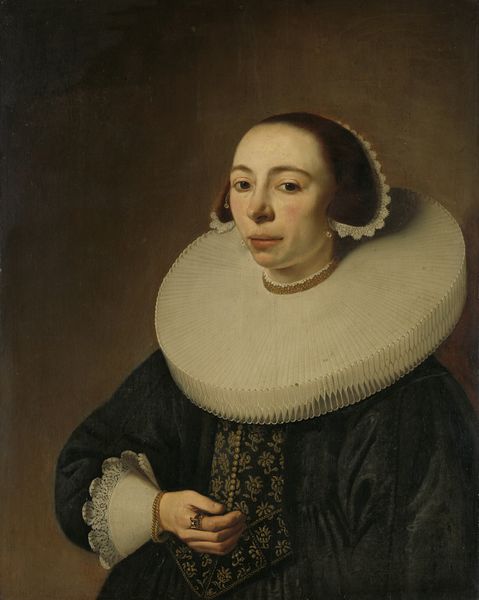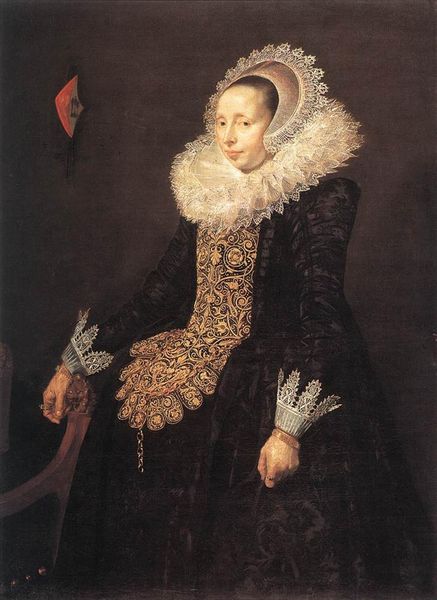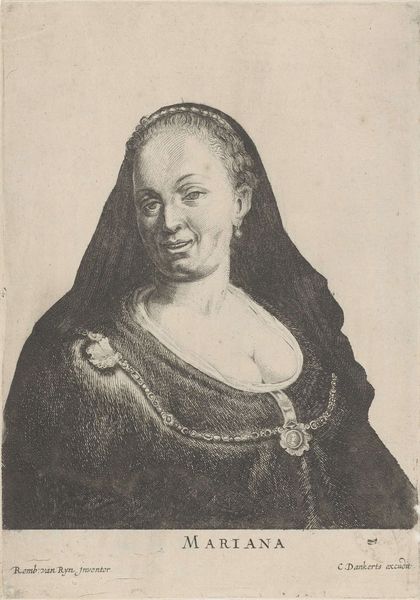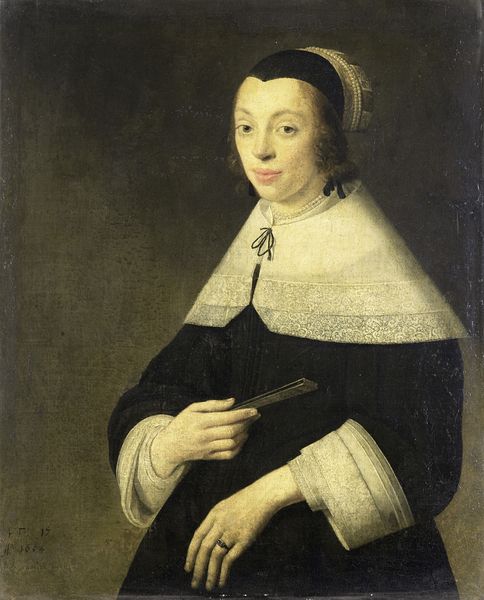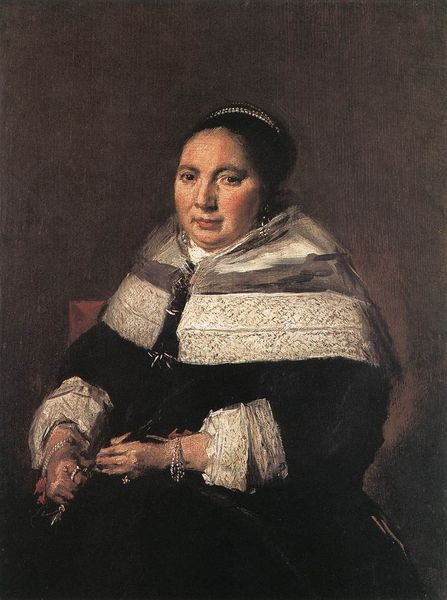
painting, oil-paint
#
portrait
#
self-portrait
#
baroque
#
dutch-golden-age
#
portrait
#
painting
#
oil-paint
#
realism
Dimensions: 65 x 45 cm
Copyright: Public domain
Editor: This is Frans Hals' "Portrait of a Young Woman," painted around 1660. The sitter's direct gaze makes me feel like I'm interrupting a private moment. What can you tell me about this work? Curator: The direct gaze you mention is indeed a powerful element, a hallmark of Hals' portraits, capturing an immediacy and psychological presence. Look closely at her clothing and the restrained palette. Does this suggest anything to you? Editor: The simplicity makes me think of a certain social status or perhaps religious affiliation, something humble. Curator: Precisely. The muted tones, the white cap and modest dark gown, reflect the somber attire often associated with Dutch Calvinist beliefs. However, see the delicate lace trim and gold pins holding the cap? Those suggest a quiet prosperity. Editor: Ah, a balance between piety and affluence. But what about her expression? It's not stern, more… contemplative. Curator: Consider what a portrait meant in 17th-century Dutch society. These images were about presenting a certain version of oneself, reinforcing status and conveying virtue. Her contemplative expression is not just a personal characteristic; it’s a symbolic attribute. Editor: So, her expression and clothing are carefully chosen to project a specific image? It's fascinating how much a single portrait can communicate. Curator: Exactly. Hals was a master at embedding these subtle, yet significant details. These details point toward an intricate understanding of Dutch cultural values and aspirations that endure. Editor: I see that now. Looking again, I notice all these seemingly small details tell a complete and intriguing story. Curator: It shows the weight and richness an image carries over time, far beyond a mere likeness.
Comments
No comments
Be the first to comment and join the conversation on the ultimate creative platform.
